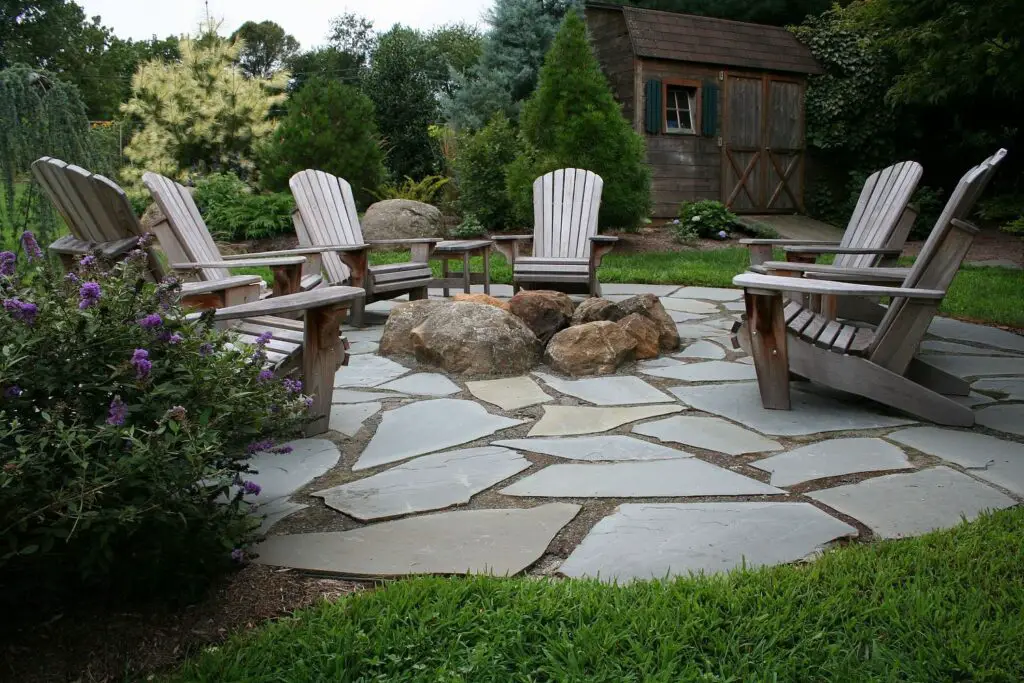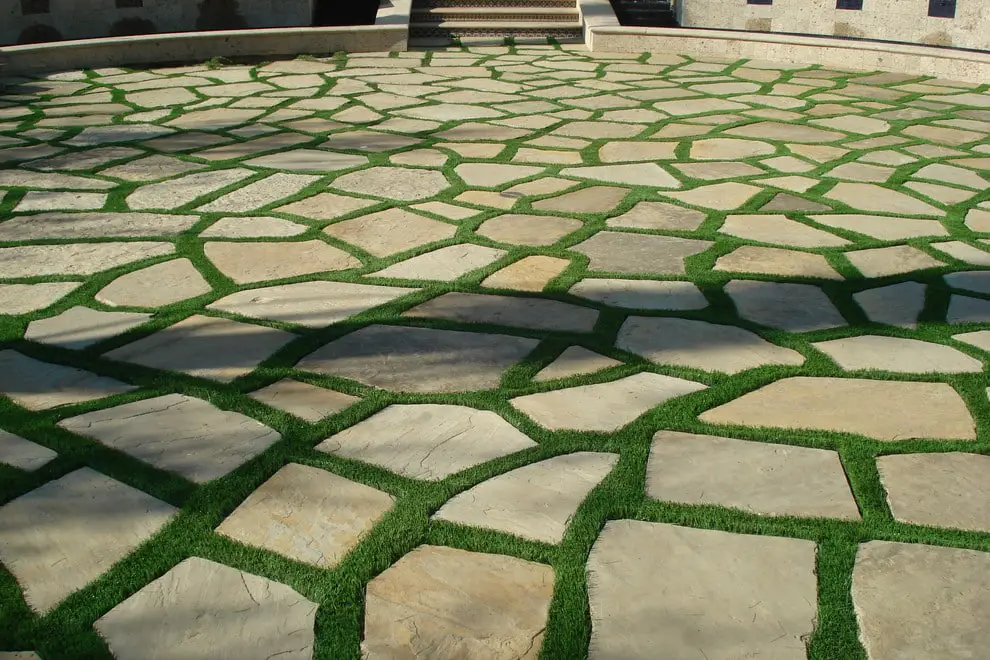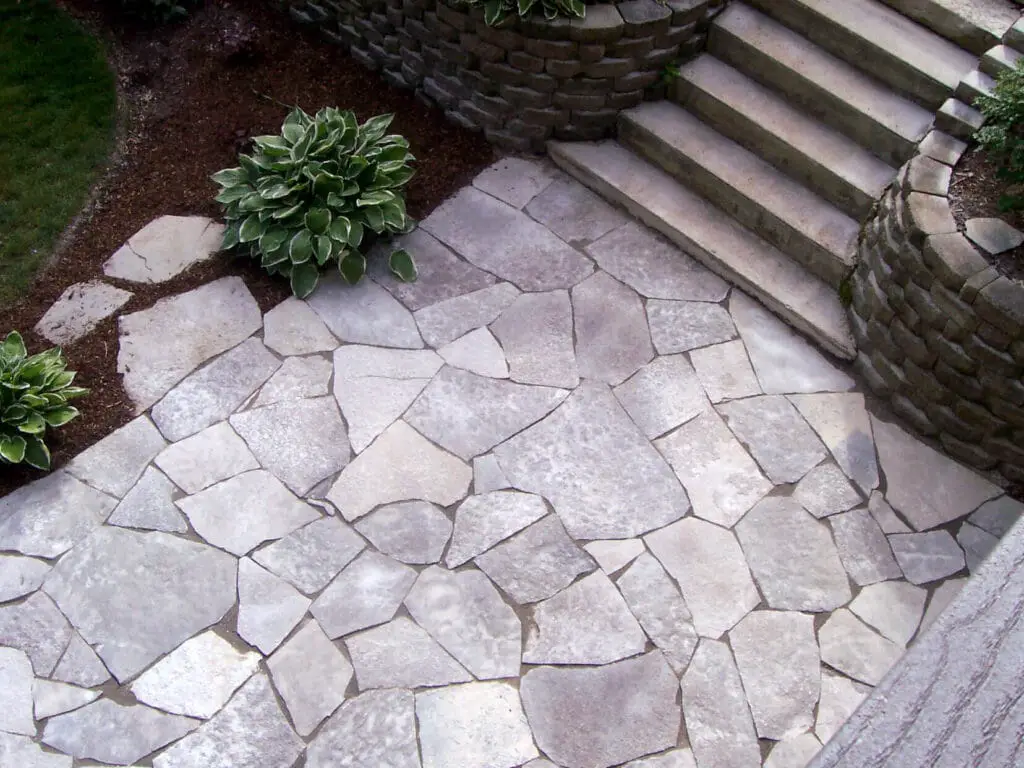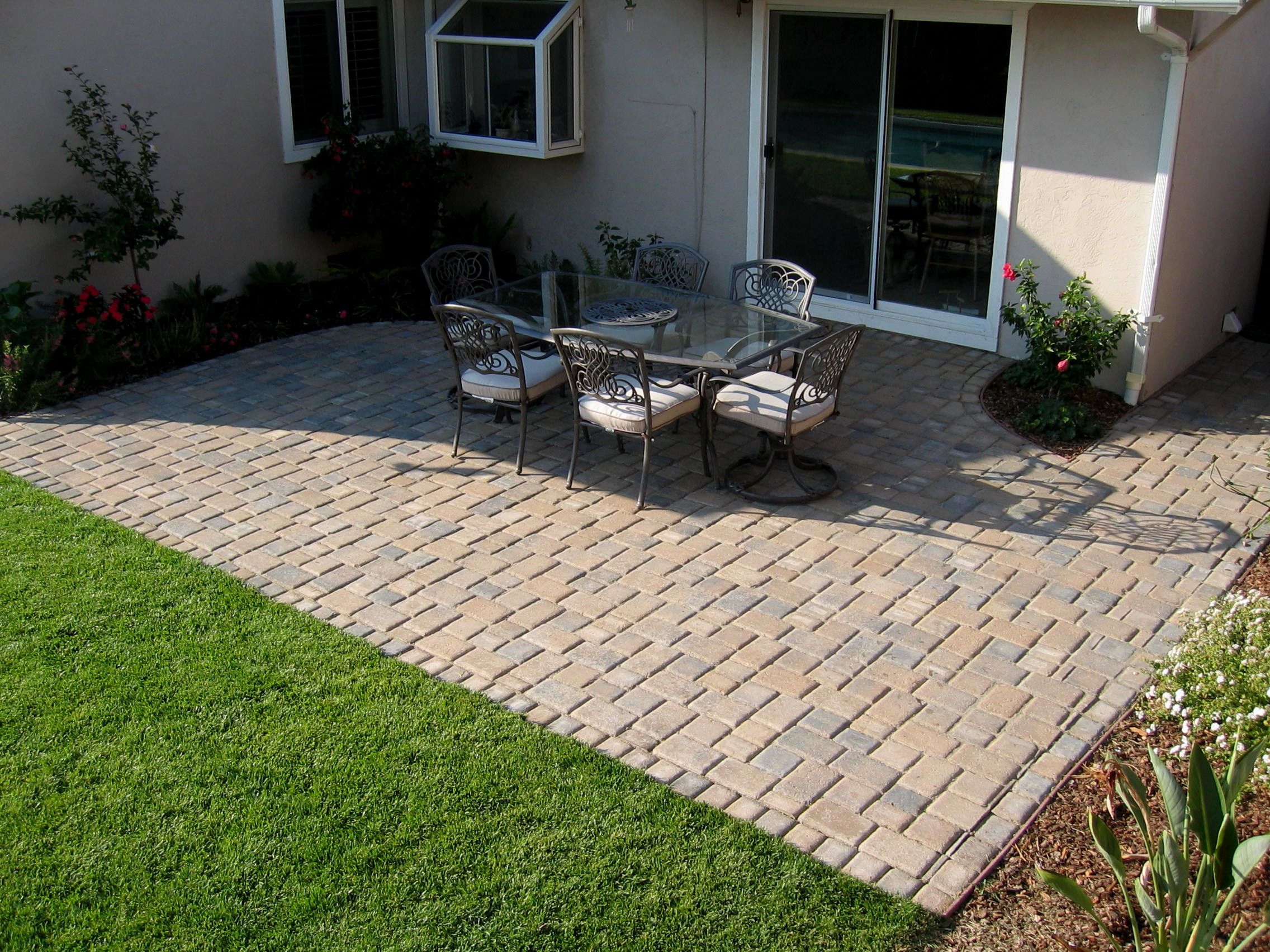How To Lay Flagstone Patio
Introduction
How To Lay Flagstone Patio: Beyond selecting the ideal flagstone, we’ll discuss the essential tools and materials you’ll need, ensuring you have everything at hand to complete the project efficiently and effectively. From shovels and levels to gravel and sand, having the right equipment and supplies is key to achieving a sturdy and long-lasting flagstone patio. Of course, preparation is crucial, so we’ll guide you through the crucial steps of planning and measuring the area, marking the layout, and calculating the required amount of flagstone and base materials.
Properly preparing the site will provide a solid foundation, preventing future issues like uneven settling or shifting. As we move into the actual installation, we’ll cover the methods of laying the flagstone, whether it’s a dry-laid or wet-laid technique. You’ll learn how to create a stable base, set the stones securely, and achieve an even surface, allowing for both functional use and aesthetic appeal.
But our journey doesn’t end there! We’ll explore optional design elements and practical considerations, such as incorporating patterns, creating pathways, and adding a joint filler like gravel or sand to ensure the longevity of your brick patio and minimize weed growth between the stones. Throughout this guide, we’ll share insider tips and tricks to troubleshoot common challenges, as well as maintenance practices to keep your flagstone patio looking stunning for years to come. From cleaning and sealing the stones to protecting the surface from harsh weather conditions, we’ve got you covered.

What do you put under a flagstone patio?
For a lasting installation, a dry-set stone patio does need a foundation, though. It’s best to start with several inches of compacted gravel, followed by a layer of stone dust, also called decomposed granite, or DG.
Excavation and Site Preparation
Before laying any materials, it’s essential to prepare the site properly. Begin by marking the area for the patio and excavating the top layer of soil to a depth of about 6 to 8 inches. This ensures that you remove any organic matter, grass, or weeds that might grow beneath the patio.
After excavation, the next step is to create a solid base using gravel. This layer serves as a stable foundation that allows for proper drainage and prevents the patio from shifting or settling unevenly over time. Spread a 4-inch layer of crushed gravel evenly across the excavated area. Using a mechanical compactor, tamp down the gravel firmly to ensure it is well compacted and level.
Landscape Fabric
To inhibit weed growth and further stabilize the base, lay landscape fabric over the compacted gravel. Landscape fabric is a permeable material that allows water to pass through while preventing weeds from penetrating the surface. This step is especially crucial if you want to minimize maintenance and keep your patio looking pristine.
After securing the landscape fabric, add a layer of sand over it. The sand acts as a cushion and leveling agent for the flagstone, ensuring a smooth and even surface. Use coarse concrete sand for this purpose, as it compacts well and provides a stable bedding material. Aim for a layer of sand that is approximately 1 to 1.5 inches thick.
Can you set flagstone in cement?
Flagstone: what to use, sand, cement, or gravel? | Devine Escapes
Of course, a flagstone patio set made of cement can look good and last a long time. I’ve made a lot of them that still look great after many years. But if there is cement between the joints, the base should be made of concrete.
Stability and Durability: The cement gives the flagstones a strong and stable base that keeps them in place and doesn’t move over time. This can be especially helpful in places with a lot of traffic or that often get heavy rain or freeze-thaw cycles.
Setting flagstone in cement is a fixed process that can’t be undone. After the stones are set and the cement hardens, it’s hard to move or make changes to them without hurting them or the cement bed below.
Time and Skill: It takes skill and experience to set flagstones correctly in cement. When the stones are being put in, they need to be carefully checked to make sure they are level and evenly spread. Besides that, making and moving cement can be hard work that takes a lot of time.
Poor Drainage: Cement is not a porous substance, so water can’t easily pass through it. In places where it rains a lot or doesn’t drain well, water may pool on the surface, which could cause problems like standing water and make the patio last less long.
Concrete can crack and move because of things in the surroundings, such as changes in temperature and the settling of the soil below. To lower these risks, it’s important to use the right cement mix and think about adding control joints so that cracking can happen slowly.
What cement mix for flagstone?
Mix up a soupy mixture of 1 part Portland cement and 1 part sand. Using a grout bag, fill in the space between the stones slightly above the stones. Be careful not to get grout on surface of the stone. When you have used up one full grout bag, use a slicker or narrow trowel to press the cement between the stones.
For flagstone work, Ordinary Portland Cement (OPC) is often used. Because it is strong and lasts a long time, it can be used outside for most tasks. You can also use a Portland cement mix that has plasticizers or bonding agents added to it to make it easier to work with and stick to things.
The sand that is added to the cement is very important for making it the right consistency and strength. Choose sand that has particles that range in size from very tiny to very large. Beach or desert sand might have impurities in it that make the cement less strong, so don’t use it.
1 part cement to 3 parts sand is a common mix for cement that can be used on flagstone. This mix, which is sometimes called a “1:3 mortar,” is strong and easy to work with at the same time. You can change the amount to 1 part cement to 4 or 5 parts sand, though, to make it easier to work with and place.
In some situations, adding liquid lime to the mix can make it better. Lime makes things easier to work with, more flexible, and better at holding water, which lowers the chance of breaking. One popular type is “1:1:6 mortar,” which is made up of 1 part cement, 1 part lime, and 6 parts sand.
How thick is flagstone?
Flagstone can be anywhere from 3/4″ to 3″ thick, and sometimes even more. Most of the time, it’s between 1 and 1.5 inches thick. This layer of flagstone works well on concrete floors that have been paved. A smaller flagstone is used because winter is not likely to damage the flagstone when it is on a concrete pad.
Intended Use: The main thing to think about when choosing flagstone thickness is what it will be used for. Flagstones that are medium to thick are better for practical surfaces like patios and walkways, while flagstones that are medium to thin are better for decorative uses and veneering.
Traffic and Weight: The thickness of the flagstone is largely determined by how much foot traffic it will get. Stones that are used a lot need to be bigger so they last longer and don’t wear down too quickly.
Load-Bearing: If the flagstone will be carrying heavy things like cars or furniture, it needs to be made of bigger stones so it can handle the weight and not crack.
Natural Difference: The thickness of flagstone can also depend on the type of stone it is. Because of how they were formed in the earth, different types of natural stone can have different thicknesses. Stones that are quarried or cut can be more regular in thickness.
Installation Method: The way flagstone is put down can also change how thick it is. For safety, dry-laid installations (where stones are put down without mortar) may need a more uniform thickness, while wet-laid installations (where mortar is used between the stones) can handle slightly different thicknesses.

What is flagstone made of?
Sandstone is generally what makes up flagstone. It is a sedimentary rock that is held together by minerals like silica, calcite, or iron ore. People often use the flat stone for projects like walkways, patios, and walls because it’s great for paving. The stone can be cut and shaped in different ways to make shapes that are one of a kind.
One type of rock that you might see a lot is sandstone. Sand grains that are packed together, usually quartz, feldspar, and other minerals, make it up. Sandstone can be beige, brown, red, or many other warm earth tones. It can also be cold, like gray or blue. Because the stone is porous, it can soak up water. This makes it a popular choice for patios, walks, and pool decks outside.
Stones like limestone are also often used to make flagstone. It is made up of calcium carbonate and can hold the fossilized remains of many different marine creatures. Limestone is usually a light color, like white, cream, beige, or gray. This kind of flagstone is valued for its classy look and can be used in patios, paths, and garden borders, among other gardening projects.
People love slate flagstone because it has a unique feel and deep, earthy colors. It is a metamorphic rock made up of layers of shale that have been heated and pressed together over time. Stones made of slate can be blue, green, black, gray, or purple. Its naturally non-slip surface makes it a great choice for walkways, pool surrounds, and other outdoor places where safety is important.
How thick should mortar be for flagstone?
After setting a few stones and establishing your grade, grout the seams tightly and wipe excess mortar with a damp sponge.
Flagstone Thickness: Flagstone thickness affects mortar thickness. The mortar bed should be around 1 inch (2.5 cm) thick for flagstones 1 to 2 inches (2.5 cm to 5 cm) thick. Thicker flagstones (2–4 inches (5 cm–10 cm) may need a thicker mortar bed to be sturdy and level.
Mortar Mix: Mortar mix affects thickness. A 1 inch (2.5 cm) thickness is suitable for a 1 cement to 3 sand mortar mix. If you change the mortar mix or add bonding agents or plasticizers, you may need to modify the thickness.
Application Method: Method affects mortar thickness. Flagstones set directly on a compacted base in the “dry-laid” method don’t need mortar thickness.
Surface Irregularities: The mortar bed should be thick enough to accommodate any irregularities in the underside of the flagstones. This helps ensure full contact between the stone and the mortar, creating a strong bond.
Why is flagstone so expensive?
Quartzite is the most expensive flagstone at $700 per ton. This price comes from its high durability and resistance to stains and all types of weather. It can be hard to shape during installation and may require extra maintenance, but it will also last many years. Limestone flagstones cost $250 per ton.
Natural Resource Scarcity: Flagstone is a natural stone, and its availability depends on the geographic location and geological formations of the region. Some types of flagstone are sourced from specific quarries, making it less abundant and more costly to extract and transport.
Quarrying and Extraction Costs: The process of quarrying and extracting flagstone from the earth involves heavy machinery, skilled labor, and significant resources. These costs are passed on to consumers, making the end product more expensive.
Labor-Intensive Processing: After extraction, flagstone undergoes processing to achieve the desired size, thickness, and finish. Skilled labor is required to cut, shape, and finish each stone, adding to the overall cost.
Quality and Aesthetics: Flagstone is known for its unique beauty and natural variations in color, texture, and pattern. Stones with exceptional quality and aesthetic appeal are often priced higher due to their rarity and demand.
What is the base material for flagstone?
Decomposed granite
Sand or decomposed granite are commonly used as a base material for flagstones. First off, they are easy to install and offer great drainage. In addition, they also will help prevent weeds and plant growth between your stones as a result. However, for a more permanent installation, use mortar (cement).
Sand is a widely used base material for flagstone installations. It provides a stable and level surface for the flagstone to rest on, allowing for proper alignment and stability. The sand base also facilitates drainage, preventing water from pooling beneath the flagstone. Coarse sand or sharp sand is typically recommended for flagstone projects, as it compacts well and provides good support.
Its drainage and stability make it ideal for high-traffic areas or moisture control. Gravel or crushed stone may require more compaction and leveling than sand to smooth flagstone.
Weathered granite that has decomposed is called decomposed granite. This stable, permeable base material is ideal for flagstone projects. Decomposed granite drains water while remaining stable, making it ideal for high-traffic or rainy areas.
In steep or uneven terrain, flagstone installations may need a concrete base. A concrete base keeps flagstone level and prevents slippage.

Conclusion
Careful foundation planning ensures your patio’s endurance and stability, giving you piece of mind that it will resist time and weather. Flagstone and designs gave your patio a personal touch, making it unique. Attention to precision during construction ensures a level, smooth surface for functionality and aesthetics. With your newfound knowledge, you may want to do additional landscaping and DIY projects to improve your home. Your outdoor enthusiast career has just begun, and the options are unlimited.
If you used dry-laid or wet-laid stones, you’ve created a peaceful and inviting spot for you, your family, and your guests. Enjoy your beautiful flagstone patio and be proud of your DIY efforts. The finished result and the memories you make in this magical outdoor retreat are the benefits.
However, our journey doesn’t end here. Regular maintenance and care will ensure your flagstone patio remains in pristine condition. Periodically cleaning the stones, reapplying sealant, and addressing any potential issues promptly will guarantee its beauty and durability for years to come. So go ahead, invite friends over for a barbecue, host intimate gatherings under the stars, or simply enjoy moments of solitude surrounded by the serenity of nature. Your flagstone patio has become a symbol of your creativity, a reflection of your style, and an extension of your home that blends seamlessly with the great outdoors.








